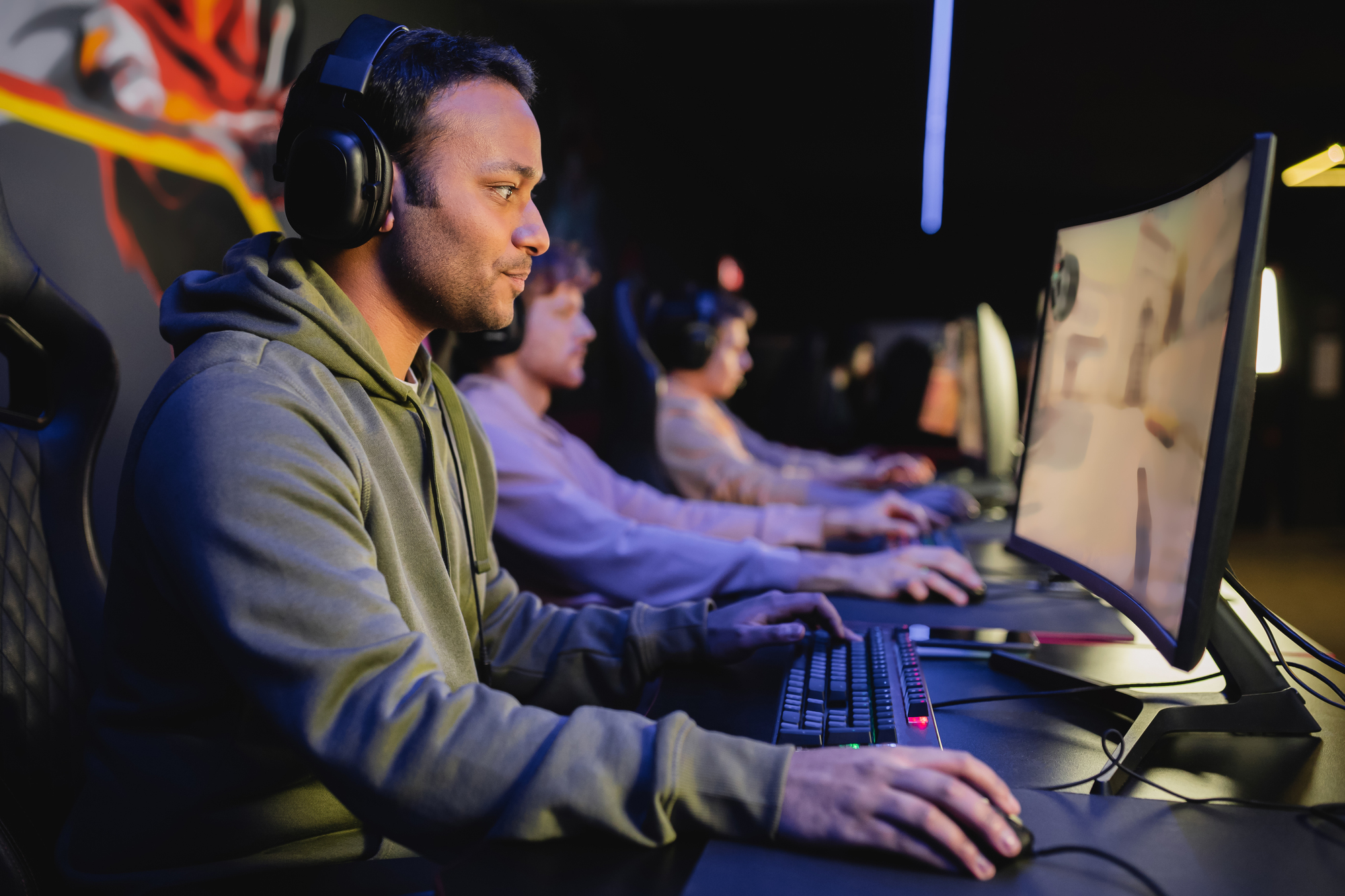Online tournaments offer thrilling opportunities for gamers to showcase their skills and compete against others worldwide. Strategy plays a pivotal role in determining success in these digital contests. Effective planning, adaptability, and understanding tournament formats are key elements that can significantly boost a player’s chances of winning.
Selecting the right tournament is crucial. Players should consider factors like buy-in amounts, prize structures, and game types when choosing competitions. This initial decision can greatly impact overall performance and potential winnings. Once in the tournament, communication becomes vital for team-based events. Clear roles and responsibilities help coordinate efforts and maximize the team’s effectiveness.
Betting strategies vary depending on the game and tournament stage. In blackjack tournaments, for example, players may need to adjust their approach as the competition progresses. Conservative betting early on can sometimes yield advantages over high-stakes players who deplete their chips quickly. As tournaments advance, participants must balance risk-taking with chip preservation to stay competitive and reach the final rounds.
Foundations of Tournament Strategy
Tournament poker requires a distinct approach compared to cash games. Players must adapt their strategies based on changing dynamics and structures throughout the event.
Understanding Tournament Structure
Tournament structure shapes player strategies. Blind levels increase at set intervals, putting pressure on shorter stacks. Early stages often feature deep stacks relative to blinds, allowing for more postflop play. As blinds rise, stack sizes shrink in relation, leading to more preflop aggression.
Antes typically come into play during middle stages, increasing pot sizes and incentivizing steals. Late stages see a shift to short stack play as average stacks dwindle. Players must adjust their ranges and betting patterns as the tournament progresses.
Payout structures also impact strategy. Top-heavy payouts encourage more aggressive play near the bubble, while flatter structures may lead to tighter play.
Assessing Risk-Reward in Decision Making
Risk assessment forms the core of tournament strategy. Early on, players can afford to take calculated risks to build a stack. As the tournament progresses, each decision carries more weight.
Stack size dictates available moves. Deep stacks allow for more postflop play and bluffing. Short stacks must focus on push/fold situations. Medium stacks face tough decisions balancing survival with chip accumulation.
Position becomes increasingly important. Late position allows for more steal attempts and wider opening ranges. Early position play requires tighter ranges to avoid difficult postflop situations.
ICM (Independent Chip Model) considerations come into play near payouts. Players must weigh chip value against tournament equity when making decisions. This often leads to tighter play from larger stacks and more aggression from shorter stacks.
Strategic Play Throughout Tournament Stages
Successful poker tournament play requires adapting strategies as the event progresses. Players must adjust their approach based on changing stack sizes, blind levels, and opponent tendencies.
Early and Middle Stages
In the early stages, players typically have deep stacks relative to the blinds. This allows for more post-flop play and less preflop aggression. Tight-aggressive play often works well, as players can afford to wait for premium hands.
As the tournament moves to the middle stages, antes kick in and stacks get shallower. This shifts the focus to preflop play. Stealing blinds and antes becomes more important. Players should look for opportunities to put pressure on shorter stacks.
Aggression increases during this phase. Wide-ranging continuation bets and 3-bet bluffs become more common. Players must balance their ranges to avoid becoming predictable.
The Criticality of Stack Sizes in Later Stages
Stack sizes play a key role in late-stage tournament strategy. Short stacks often adopt a push-or-fold strategy, looking for spots to get all chips in preflop. Medium stacks aim to apply pressure without risking elimination.
Big stacks can bully shorter stacks, using their chip advantage to force folds. They can also call more liberally, hoping to eliminate opponents.
The bubble phase requires special attention. Short stacks tighten up to survive into the money. Big stacks can exploit this by increasing aggression.
In the money, ICM considerations come into play. Pay jumps affect optimal strategy, often leading to tighter play from short and medium stacks.
Heads-Up Play: The Final Showdown
Heads-up play marks the final stage of a tournament. The dynamics shift dramatically with only two players remaining.
Aggression is key in heads-up battles. Players should raise a high percentage of hands on the button. Defending the big blind becomes crucial to prevent constant blind steals.
Position gains even more importance heads-up. The button acts last post-flop, providing a significant advantage. Players should capitalize on this by playing more hands in position.
Adjusting to opponent tendencies is vital. Some players become overly aggressive heads-up, while others tighten up. Identifying and exploiting these patterns can lead to victory.
Advanced Techniques and Considerations
Mastering advanced poker tournament strategies requires a deep understanding of complex concepts and situational play. Skilled players leverage sophisticated techniques to gain edges and maximize their chances of success.
Bluffing and Stealing
Effective bluffing and stealing are crucial skills for tournament success. Players must identify optimal opportunities to bluff based on board textures, opponent tendencies, and stack sizes. Stealing the blinds becomes increasingly important as tournaments progress and antes come into play.
Aggressive players often employ 3-betting and 4-bet shoves to put pressure on opponents and accumulate chips. These plays can be especially effective against tight players who are likely to fold to aggression. However, bluffs and steals must be balanced with value bets to avoid becoming predictable.
Mastering Hand Selection and Positional Awareness
Hand selection and positional awareness are fundamental to advanced tournament play. As stack sizes fluctuate, players must adjust their starting hand requirements accordingly. Shorter stacks typically play a tighter range, while deeper stacks can afford to see more flops with speculative hands.
Position is a critical factor in hand selection. Late position allows players to act with more information and steal pots more frequently. Early position play requires a stronger hand range due to the possibility of facing multiple opponents. Players should factor in stack sizes, table dynamics, and stage of the tournament when choosing which hands to play from various positions.
Optimizing Your Online Approach
Successful online tournament play requires adapting strategies for the digital environment and establishing effective study habits. These elements are crucial for improving performance and results.
Differences Between Online and Live Poker
Online poker tournaments differ significantly from their live counterparts. The pace is faster, with more hands played per hour. Players can’t rely on physical tells, shifting focus to betting patterns and timing. Multi-tabling is possible online, allowing participation in multiple tournaments simultaneously.
Online platforms offer features like hand history review and note-taking tools. These resources help players analyze their play and track opponents’ tendencies. The player pool tends to be larger and more diverse online, with a wider range of skill levels represented.
Bankroll management becomes even more critical in the online space due to the temptation of easy rebuys and the ability to quickly jump into new tournaments.
Building a Study and Practice Routine
A structured approach to learning and improvement is key for online tournament success. Regular review of hand histories helps identify leaks and areas for improvement. Utilizing poker training sites and video content can provide valuable insights from experienced players.
Joining study groups or forums allows for discussion of strategies and hand analysis with peers. Tracking software can offer detailed statistics on personal play and opponent tendencies, aiding in decision-making.
Dedicated practice sessions focusing on specific aspects of tournament play, such as short-stack strategy or bubble play, can sharpen skills. Setting aside time for focused study without distractions improves retention and application of new concepts.
Balancing study time with actual play is essential. Applying learned concepts in real tournament situations reinforces understanding and helps identify areas needing further work.












